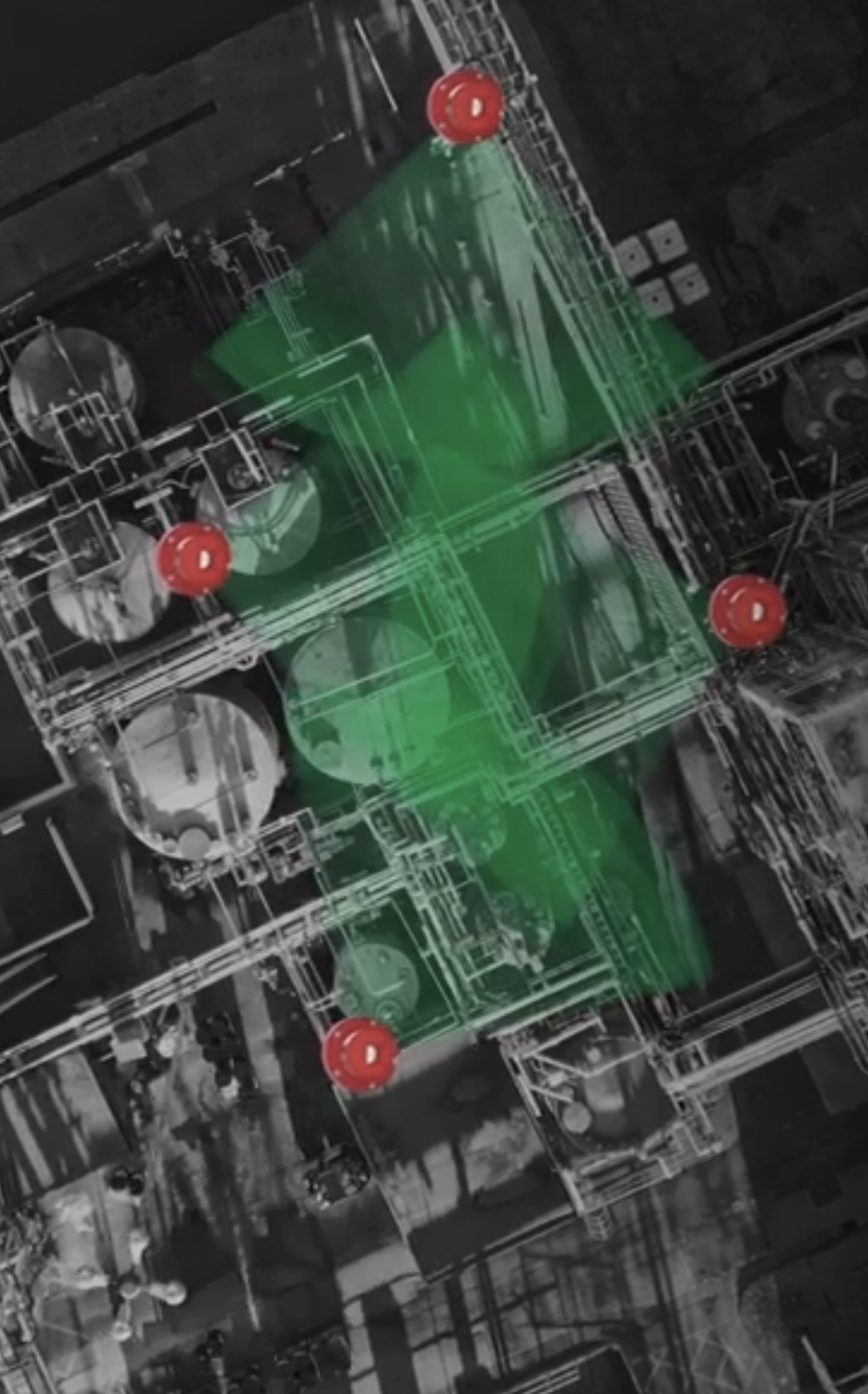As the year-end holiday season approaches, industrial facilities face unique safety challenges, and strong fire and gas detection systems are critical to maintaining a safe, compliant workplace. A proactive, multi-layered detection strategy not only supports safety during colder temperatures and reduced staffing, it also helps ensure reliable hazard monitoring throughout year-end operations and into the New Year.
Seasonal Safety: Best Practices for Fire and Gas Detection Systems
Topics: MSA, Gas Detection Solutions, Fixed Gas Solutions, Safety, Flame Detection
Tap into the Potential of Self-Checking Gas Sensor Technology
With MSA’s TruCal® technology, available on XCell® hydrogen sulfide (H₂S) and carbon monoxide (CO) gas sensors, you get a smarter, more proactive approach to gas detection. TruCal helps monitor sensor health automatically, so you don’t have to wait until the next scheduled calibration to find out something’s wrong. Whether you’re running critical infrastructure or a high-demand industrial facility, TruCal helps give you added peace of mind, right where it counts: between calibrations.
Topics: MSA, Gas Detection Solutions, Fixed Gas Solutions, Safety
Flame detectors are critical for ensuring the safety of personnel, equipment, and operations in facilities where fire hazards exist. However, selecting the right flame detector—and installing it properly—can make a significant difference in the effectiveness of your fire protection system. In this post, we’ll guide you through key considerations when choosing and installing flame detectors to help improve safety at your facility.
Topics: MSA, Safety, Flame Detection
Navigating Uncertainty: Securing ROI Through Precise Flow Measurement in Industrial Processes
In today's volatile economic landscape, where fluctuating commodity prices and supply chain disruptions will affect process costs, decision-makers in the industrial sector face unprecedented pressure to optimize operations and maximize return on investment (ROI). With prices expected to rise for raw materials and energy, every efficiency gained translates directly to the bottom line. In this environment, the often-overlooked area of flow measurement presents a powerful opportunity to secure significant ROI, particularly in industries like manufacturing, oil & gas, and wastewater management.
Topics: MSA, Gas Detection Solutions, Fixed Gas Solutions
Key Considerations for Fixed Gas Detector Installation
Gas monitoring at any facility is an important task, but despite best efforts, refrigerant leaks may still occur. Prompt detection can allow users to deal effectively with leaks. This blog explores key considerations for successful gas detection installation to help promote safety of your facility.
Topics: MSA, Gas Detection Solutions, Fixed Gas Solutions
As a safety professional, selecting flame detectors that align with your facility’s requirements is essential. Discover the key factors to consider when choosing a flame detection system.
Topics: MSA, Safety, Flame Detection
How Advanced Technologies Minimize False Alarms in Flame Detectors
In industrial settings where flammable materials are handled, flame detection systems are an important layer of safety programs. False alarms in these systems disrupt operations and can risk desensitizing personnel to alerts. Different flame detection methods have different false alarm profiles in different applications. Advanced flame diagnostic technologies have been and are being developed to enhance these systems, including to reduce false alarms. Among these technologies, artificial neural networks (ANNs) stand out as a promising option, offering false alarm reduction.
Topics: MSA, Safety, Flame Detection
The potential dangers associated with ammonia gas leaks necessitate a thorough understanding of the risks and implementation of stringent safety measures. Ammonia is a commonly used industrial chemical, serving various purposes across different sectors. The potential dangers associated with ammonia gas leaks necessitate a thorough understanding of the risks and implementation of stringent safety measures. In this post, we explore the general dangers of ammonia gas leaks and critical safety precautions to help protect people, property, and the environment.
Topics: MSA, Gas Detection Solutions, General Monitors, Fixed Gas Solutions, Safety, Flare Gas
The Importance of Calibrating Fixed Gas Detectors for Safety
Fixed gas detectors play a critical role in safeguarding people, places, and the planet against potentially life-threatening gases in environments ranging from high value industrial complexes to laboratories and hazardous confined spaces. However, to ensure their accuracy and reliability, regular calibration is an indispensable practice.
Calibration is usually a two-step procedure – the zero and the span. In the first step, the sensor is zeroed using ambient air after confirming that the target gas is not present or by using a suitable gas from a cylinder. The second step is to expose the instrument to the calibration gas that contains a known concentration of the target gas the sensor is designed to measure. The readings are then adjusted to match these values.
Topics: MSA, X5000, Gas Detection Solutions, Fixed Gas Solutions, Safety, Field Service
This month we explore the concept of flashpoints and their significance in fire safety. A flashpoint refers to the temperature at which a flammable substance releases sufficient vapor to ignite when exposed to an external source of ignition, such as a spark. It serves as a crucial factor in determining the fire hazard potential of various liquids.
Topics: MSA, Gas Detection Solutions, Fixed Gas Solutions, Safety










